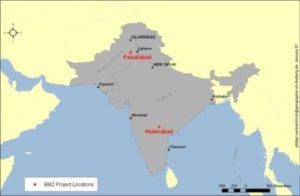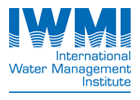Ensuring Health and Food Safety from Rapidly Expanding Wastewater Irrigation in South Asia
This 3 year (2005-2008) BMZ funded project aims to identify the risks and benefits associated with the use of wastewater in urban and peri-urban agriculture.
The goal of the project is to improve health and safeguard wastewater-dependent livelihoods of resource-poor urban and peri-urban farmers and consumers in Pakistan and India by developing realistic risk mitigation options. These will then be promoted among various stakeholders including farmers and policymakers.
Two mega-cities, namely Hyderabad, India, and Faisalabad, Pakistan, with large untreated wastewater irrigation areas, have been selected as project locations.
BMZ Project Locations

In India, the villages (6) are situated along the Musi River downstream of the city of Hyderabad. The river which runs through the city collects discharges from industry and households, making it a perennial river, supporting a variety of livelihoods. Water for agriculture, is distributed through an ancient system of anicuts and irrigation canals, connected with this river, which now carries highly polluted water, but providing year round water for down stream farmers.
In Pakistan, the systems of irrigation are different in the two study villages. Most of the agricultural areas of the village Chakera, was supposed to use treated wastewater discharged from the Wastewater stabilization ponds. However, the farmers tap the sewerage lines that service the ponds, long before it is treated so that they can utilize the nutrient rich wastewater. In the control village of Kehala, the farmers use a mixture of canal (river) and ground water.
The research combines field and laboratory methods and interactions with all actors in the chain of wastewater use. This includes producers who utilise wastewater, traders who market and transport the crops, consumers of the produce and relevant authorities. Of critical importance is the identification of all actors, such as relevant institutions and community members, and their inclusion in the development and implementation of mitigation options to reduce health risks and to improve the livelihood benefits of using wastewater in agriculture.
Expected outputs of the project:
- Social and institutional map of the multiple actors (individuals and organizations) along the chain from wastewater source to end-use.
- GIS (Geographic Information Systems) database of urban and peri-urban agriculture and wastewater irrigation.
- Evaluation and documentation of human health and agricultural risks from field to consumer.
- Economic valuation of the direct and indirect livelihood benefits as well as the health and adaptation-related costs of wastewater irrigation.
- Comprehensive assessment of tradeoffs, risks, costs and benefits at different levels along the chain from wastewater users to consumers of produce.
- Concrete, actionable risk mitigation recommendations based on outputs 1-5.

















